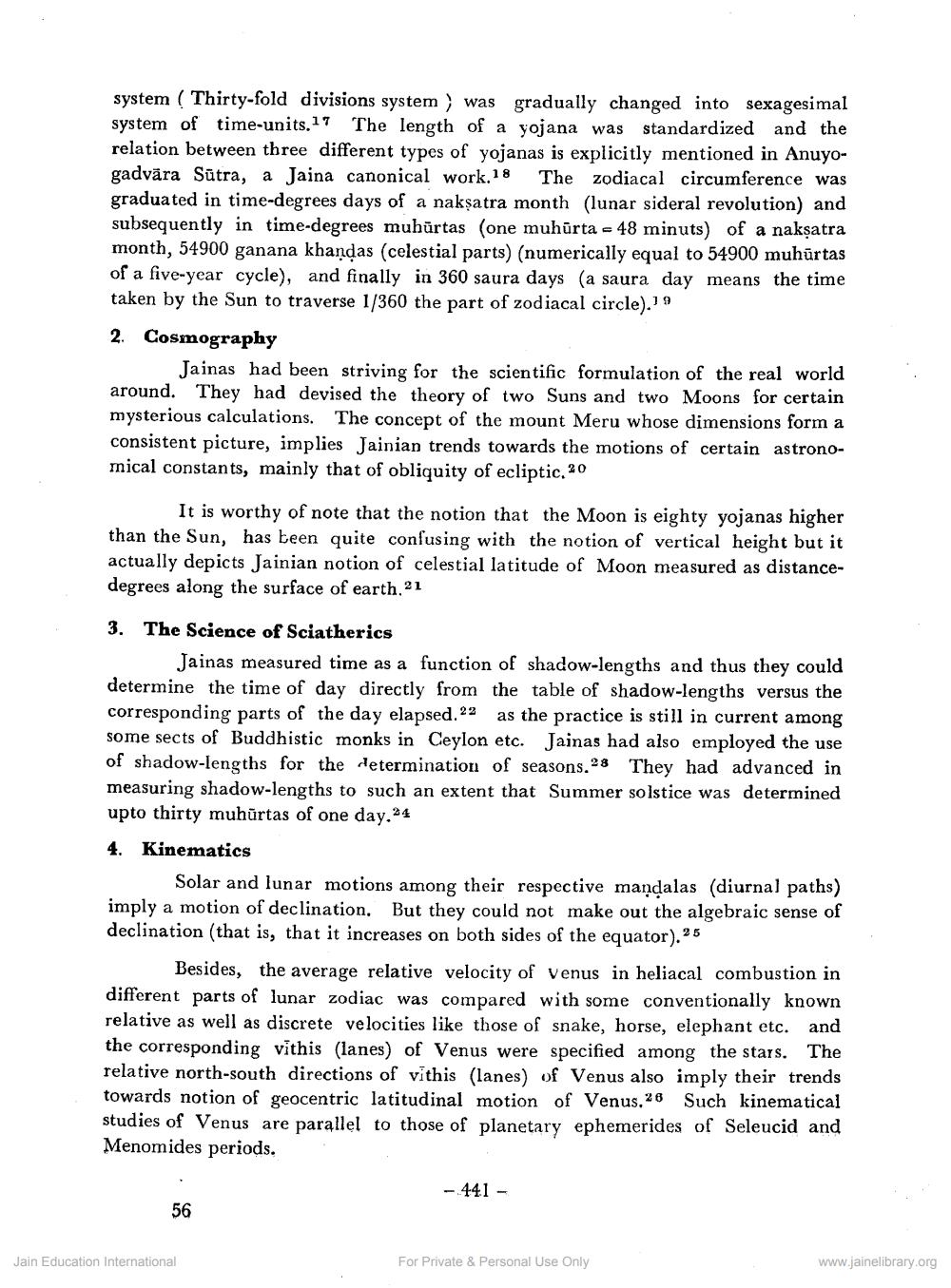Book Title: Studies in Jain Astronomy Postvedang Prisiddhantik Indian Astronomy Author(s): S S Lishk, S D Sharma Publisher: Z_Kailashchandra_Shastri_Abhinandan_Granth_012048.pdf View full book textPage 3
________________ system (Thirty-fold divisions system) was gradually changed into sexagesimal system of time-units.17 The length of a yojana was standardized and the relation between three different types of yojanas is explicitly mentioned in Anuyogadvara Sutra, a Jaina canonical work. 18 The zodiacal circumference was graduated in time-degrees days of a nakṣatra month (lunar sideral revolution) and subsequently in time-degrees muhartas (one muhurta 48 minuts) of a nakṣatra month, 54900 ganana khandas (celestial parts) (numerically equal to 54900 muhurtas of a five-year cycle), and finally in 360 saura days (a saura day means the time taken by the Sun to traverse 1/360 the part of zodiacal circle)."" 2. Cosmography Jainas had been striving for the scientific formulation of the real world. around. They had devised the theory of two Suns and two Moons for certain mysterious calculations. The concept of the mount Meru whose dimensions form a consistent picture, implies Jainian trends towards the motions of certain astronomical constants, mainly that of obliquity of ecliptic, 30 It is worthy of note that the notion that the Moon is eighty yojanas higher than the Sun, has been quite confusing with the notion of vertical height but it actually depicts Jainian notion of celestial latitude of Moon measured as distancedegrees along the surface of earth, 21 3. The Science of Sciatherics Jainas measured time as a function of shadow-lengths and thus they could. determine the time of day directly from the table of shadow-lengths versus the corresponding parts of the day elapsed."" as the practice is still in current among some sects of Buddhistic monks in Ceylon etc. Jainas had also employed the use of shadow-lengths for the determination of seasons. They had advanced in measuring shadow-lengths to such an extent that Summer solstice was determined upto thirty muhurtas of one day.24 4. Kinematics Solar and lunar motions among their respective mandalas (diurnal paths) imply a motion of declination. But they could not make out the algebraic sense of declination (that is, that it increases on both sides of the equator).25 Besides, the average relative velocity of venus in heliacal combustion in different parts of lunar zodiac was compared with some conventionally known relative as well as discrete velocities like those of snake, horse, elephant etc. the corresponding vithis (lanes) of Venus were specified among the stars. relative north-south directions of vithis (lanes) of Venus also imply their trends towards notion of geocentric latitudinal motion of Venus.20 Such kinematical studies of Venus are parallel to those of planetary ephemerides of Seleucid and Menomides periods. 56 Jain Education International -441 For Private & Personal Use Only www.jainelibrary.orgPage Navigation
1 2 3 4 5 6 7
